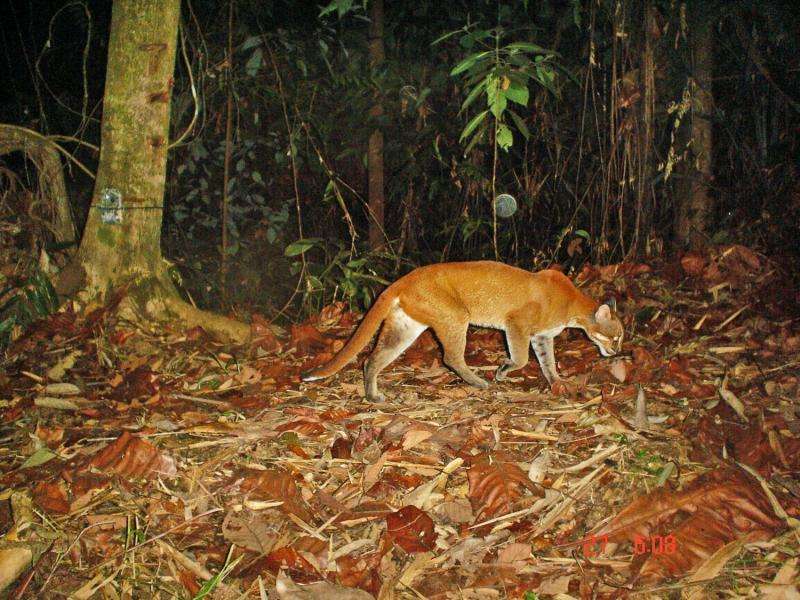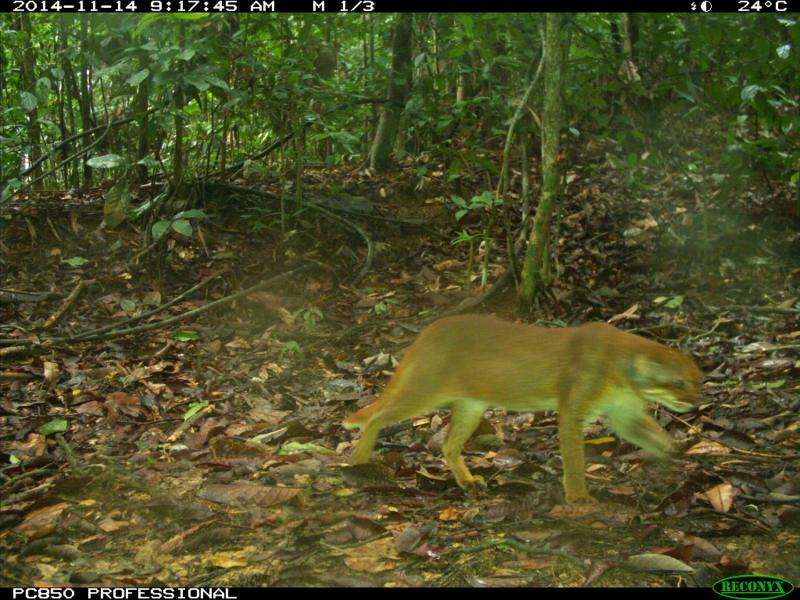Two felid cousins responded in the past very differently to climate change

Southeast Asia is home to numerous felids, including the Asian golden cat and the bay cat. The two cat species are closely related sister species which split from each other 3.16 million years ago. Yet, their more recent history was quite different. Scientists from the Leibniz Institute for Zoo and Wildlife Research (Leibniz-IZW) and their international partners could now show that, after a massive volcanic eruption about 73,000 years ago, the Asian golden cat survived only in Indochina, from where it expanded its range in dramatic fashion during the peak of the last Ice Age. The cooler and drier climates at the time pushed its sister species, the bay cat, however, into rainforest refuges on Borneo. These findings are published in the scientific journal Royal Society Open Science.
Today, the endangered bay cat only occurs in evergreen rainforests on Borneo. In contrast, the Asian golden cat occurs in habitats ranging from tropical rainforests on Sumatra to temperate forests in the Himalayas and southern China. Living in different environments resulted in the evolution of different colour morphs for the Asian golden cat, such as spotted, reddish and greyish to black. Aided by this variation in colour morphs, up to five subspecies have been recognised in the Asian golden cat. A comprehensive taxonomic assessment, where molecular data and morphological characters are combined, was still lacking for both species, and it was unclear why the two sister species differed so much in their range and distribution.
An international team of researchers from the Leibniz-IZW, National Museums Scotland and WWF-Malaysia set out to provide such an assessment by using samples collected mostly from museum specimens and applying a new approach where they combined molecular and morphological analyses with statistical models of Pleistocene species distributions. The results suggest divergent evolutionary histories for the two sister cat species. During the Late Pleistocene and especially towards the end of the last Ice Age, the bay cat became restricted to rainforest refuges on Borneo. The results of the models for the Asian golden cat, however, showed that throughout the same period large parts of Southeast Asia contained suitable habitat. "Although we expected this on the basis of their current distribution, our molecular findings first appeared to contradict these results." says Riddhi P. Patel, PhD student at the Leibniz-IZW.

The scientist found a very low molecular diversity in Asian golden cats, which seemed very surprising and at variance in view of the large distribution area. The resolution of this paradox is provided by assuming a dramatic population reduction during the Late Pleistocene. "We think that the Toba super-volcanic eruption on Sumatra, about 73, 000 years ago, destroyed so much forest habitat that it caused a massive population decline in most of the range of the Asian golden cat, with populations surviving only in Indochina. Only a long time after suitable climatic conditions returned during the last Ice Age were Asian golden cats able to move out from their Indochinese refuge and return to former habitats, spreading north to southern China, east to India and, in particular, south to Sumatra", Patel explains. This hypothesis was consistent with data for morphological characters. "We found the greatest diversity in coat colour morphs in Indochina, whereas on the Malay Peninsula and in Sumatra golden cats are almost exclusively reddish," adds Andrew C. Kitchener of the National Museum of Scotland.
These results show that despite their close relationship, the Asian golden cat and bay cat responded quite differently to climate change during the late Ice Age. The recent rapid expansion of the range of the Asian golden cat clearly is incompatible with the current taxonomic classification into five subspecies. "We recommend recognising only two Asian golden cat subspecies, one north of the Isthmus of Kra and the other one south of it on the Malay Peninsula and in Sumatra," says Patel.
More information: Riddhi P. Patel et al. Two species of Southeast Asian cats in the genuswith diverging histories: an island endemic forest specialist and a widespread habitat generalist, Royal Society Open Science (2016). DOI: 10.1098/rsos.160350
Journal information: Royal Society Open Science
Provided by Forschungsverbund Berlin e.V. (FVB)





















